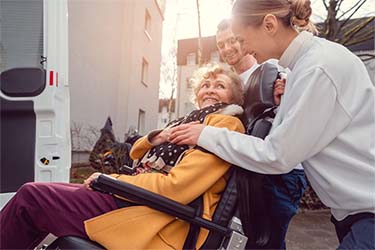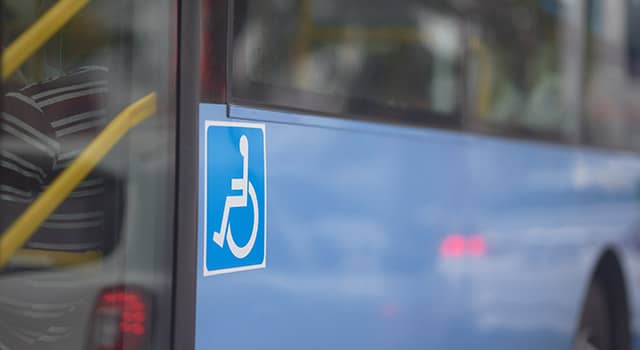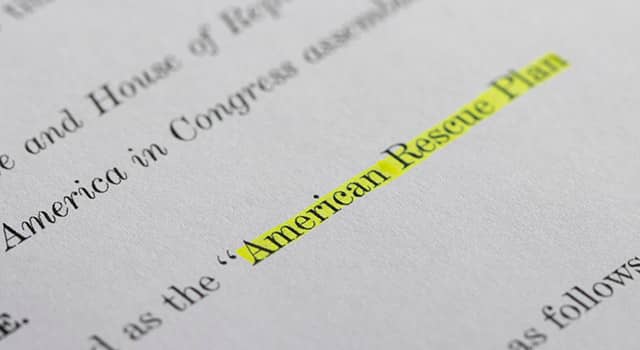
Enhancing Mobility for Seniors and Individuals with Disabilities
Physical and cognitive changes can become more common with aging, ultimately affecting a person’s mobility.
The Federal Transit Administration's Enhancing Mobility for Seniors and Individuals with Disabilities program, also known as Section 5310, is designed to help make transportation easier and more accessible for older adults and people with disabilities. The program provides federal funds to improve access to transportation for seniors and individuals with disabilities, allowing them to participate more fully in society.
Transportation Barriers Faced by Seniors and Individuals with Disabilities
When it comes to transportation, seniors and people with disabilities can face more barriers than non-disabled people. Some may be unable to drive due to physical or cognitive disabilities. Others may face a lack of accessible transportation in the areas where they live and work. Even rideshare services can lack accessibility with limited numbers of vehicles being equipped with a wheelchair ramp or lift. These barriers can impact the overall physical and mental well-being of seniors and people with disabilities who may not be able to get to and from work, the local grocery store, or a doctor’s appointment due to transportation barriers.
Overview of Transportation Funding Programs
Generally, there are two programs under the Federal Transportation Administration (FTA) intended to increase access to transportation for all: Section 5310 and Section 5311. These programs receive funding from the federal government, which is used to provide services like paratransit, non-emergency medical transportation (NEMT), and private nonprofit transportation. Funds can also be used by state governments to purchase accessible vehicles or improve existing transportation services.
Section 5310 Funding
Entities eligible for funding under Section 5310 include:
- State and local governments: These entities can receive funding directly and are responsible for administering the program at the local level, including distributing funds to local cities.
- Private and nonprofit organizations: These entities can apply for funding to operate transportation services that cater to the needs of seniors and individuals with disabilities.
- Certain private operators: In cases where no nonprofit organizations are available, private operators of public transportation services may be eligible for funding under specific conditions.
Types of Projects Funded
Section 5310 funding supports a wide range of projects, including but not limited to:
- Purchase of accessible transportation vehicles: This funding helps buy vehicles like cutaway buses and paratransit vans that everyone can use.
- Providing paratransit services beyond those required by the ADA: This allows for broader paratransit services, like offering rides in more areas or for longer hours than the law requires.
- Mobility management programs: These programs teach seniors and people with disabilities about all their transportation options and how to use them.
- Improving infrastructure for accessibility: Money can be used to improve streets, sidewalks, and bus stops so that getting around is easier for seniors and people with disabilities.
- Making public transit more accessible: By law, public transportation must be accessible to everyone. This means vehicles should have features like ramps or lifts. Section 5310 provides money to help make public transit even more accessible to people with disabilities. This money can be used for:
- Adding helpful features: Making announcements both out loud and on screens so everyone knows where they are or what stop is next.
- Training staff: Teaching bus drivers and other staff the best ways to help passengers who might need extra assistance.
- Making information easy to understand: Ensuring maps, bus schedules, and other transportation information are presented in an accessible format.
Funding Allocation and Distribution
Under Section 5310, the federal government decides how much money each state gets based on its population of seniors and people with disabilities. States then distribute funds to cities based on needs. Cities receiving this money must contribute some of their own, known as a local match. For capital projects like buying buses, there's a 20% local match required, meaning for every four dollars from the government, the city spends one dollar of its own. For operating costs like paying drivers, the match is 50%, so the city matches every government dollar with one of its own. This system ensures both government and local funds support transportation improvements.
Application and Selection Process
The application and selection process for Section 5310 funding is managed at the state level, with states issuing calls for projects and evaluating applications based on criteria that may include the project's relevance to local needs, its impact on mobility for target populations, and capacity to implement the project successfully.
Section 5311 Funding
While Section 5310 is dedicated to improving mobility for seniors and individuals with disabilities by funding accessible transportation options and services tailored to these populations, Section 5311 focuses on enhancing and expanding public transportation options in rural areas for the general population. Like Section 5310, entities eligible for funding under Section 5311 include state and local governments, private and non-profit organizations, and some private operators.
Types of Projects Funded
Section 5311 funding supports a variety of projects aimed at enhancing rural public transportation, including:
- Expansion of rural transit services: Funds help add more routes or services in rural areas to reach more people.
- Purchase of vehicles for rural areas: This includes buying buses or vans to serve rural populations better.
- Intercity bus services: Funding supports services that connect rural areas with larger cities.
- Mobility Management Programs: Like Section 5310, these programs assist rural residents in understanding and utilizing available transportation options.
- Improving transportation infrastructure: Funds may be used for projects like building or upgrading bus stops to make rural transportation more efficient.
Funding Allocation and Distribution
Under section 5311, funding allocation to states is based on rural population size. States then prioritize funds for rural communities, focusing on transportation needs. Like Section 5310, local contributions, known as a local match, are required, with 20% for capital projects like vehicle purchases and up to 50% for operating expenses, ensuring combined effort from federal and local sources.
Application and Selection Process
The application process for Section 5311 is managed by state governments, which evaluate project proposals based on their ability to meet rural transportation needs, impact on community mobility, and capacity to successfully implement a transportation project.
A Future of Inclusive Mobility
By focusing on populations like disabled people and seniors as well as people in rural communities, sections 5310 and 5311 promote accessible mobility for all. With funding to increase transportation services and the accessibility of those services, people with disabilities and seniors can not only become more involved in their communities, but take care of their day-to-day needs, contributing positively not only to society but to individual wellbeing.
Looking to increase access to transportation in your community? Contact your local BraunAbility dealer to learn more about wheelchair accessible vehicles for commercial use.



